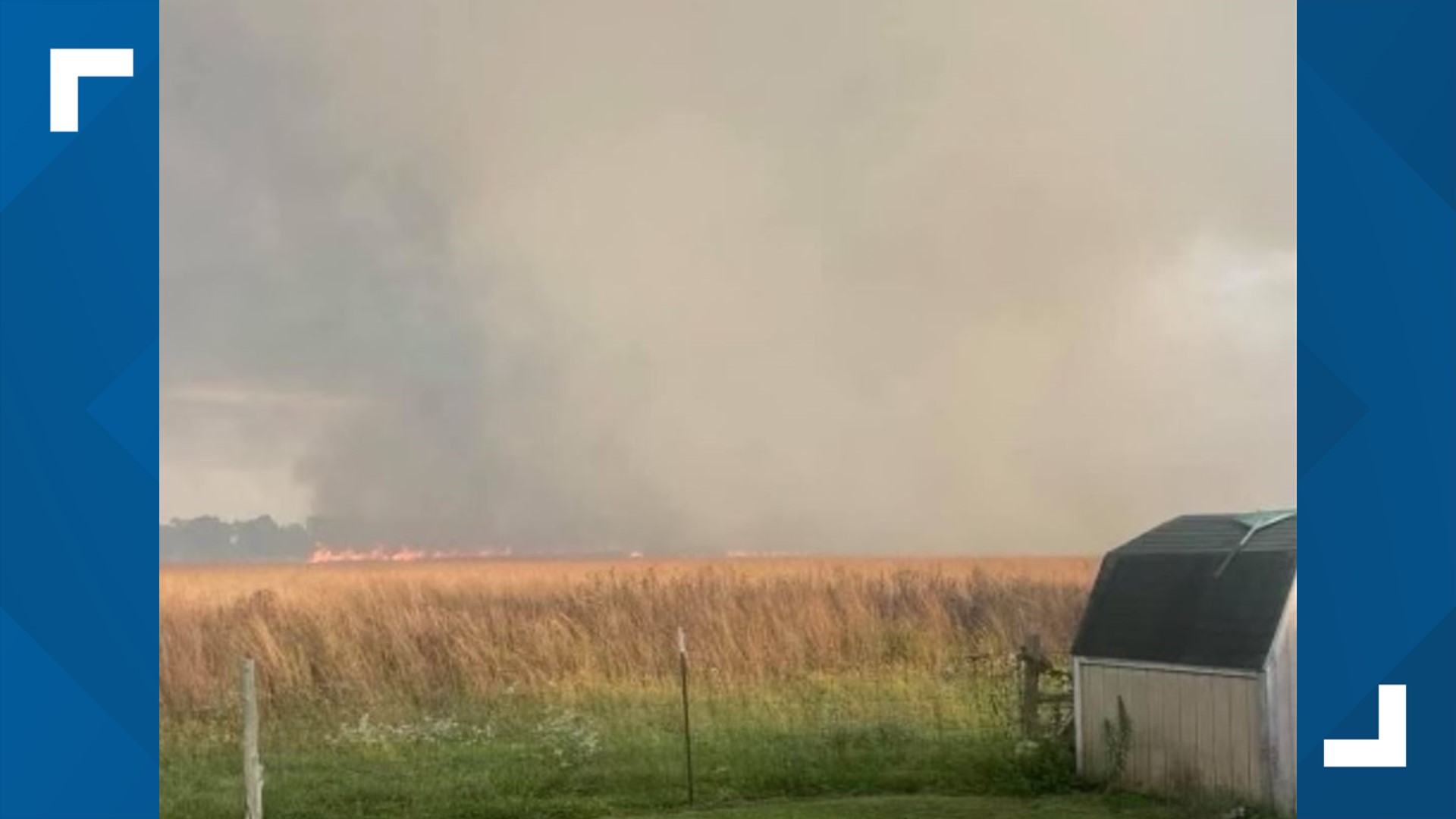KINGSTON, Ohio — This time of year you may see fires burning on grassy areas across central Ohio. These fires are controlled burns.
Is it true landowners get paid to do this? What about the risk for wildlife and neighbors? That was a message we recently got from a viewer.
Heather Russell sent us photos and a video of a fiery scene from the property next to where she lives in Kingston, located in Ross County.
THE QUESTION:
Is it true that landowners are paid to intentionally burn prairie grass? And what does that mean for the wildlife and nearby homes?
THE ANSWER:
Yes, it’s true some landowners can get paid to do this.
There is a risk so conditions have to be just right to do a burn and some wildlife are impacted, but experts say it helps many species in the long term.
SOURCES:
- Kevin Kasnyik, park operations and resource manager for Columbus and Franklin County Metro Parks
- The USDA's Farm Services Agency
- Ohio Department of Natural Resources
WHAT WE FOUND:
According to our sources, this process is called prescribed burning.
It's said to be beneficial in improving plant diversity, getting rid of invasive plants, and "improving forest health and productivity."
"There's a lot of advantages to it,” said Kasnyik.
Columbus and Franklin County Metro Parks has been using this method as a land management tool for decades.
"The grasses and species of plants that are burned, are adapted well to it and thrive when they're burned, so they usually come back healthier and better than ever,” Kasnyik said.
According to the USDA, the Agricultural Act of 2014 provided the agency authority to offer incentives for this with the goal of improving the condition of resources and enhancing wildlife habitat.
So we can verify that it's true landowners can be paid to do a prescribed burn.
But what about wildlife and people who live nearby?
According to the Ohio Department of Natural Resources, some habitats need fires to stay healthy. They also work around specific nesting periods.
However, some wildlife may be impacted in the short term -- but in the big picture, it benefits the species.
"We really do our best to conduct burns during periods of time when wildlife is not going to be impacted as much,” said Aaron Kloss, program administrator for the Ohio Division of Forestry at the Ohio Department of Natural Resources.
Our sources say neighbors need to be notified ahead of time, and so does the Division of Forestry and Ohio EPA.
Also, conditions have to be just right to determine it's safe to burn in a controlled way.
"It's a really good practice, but it has to be in specific ecosystems during specific conditions,” said Kloss.
If you have something you’d like us to verify, send us an e-mail to verify@10tv.com.

